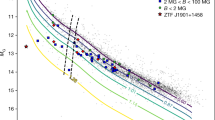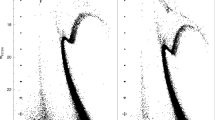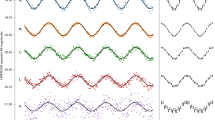Abstract
THE pulsation phenomenon has so far been observed only in 'super-giant' stars. However, there seems to be no theoretical reason why the phenomenon should not occur in denser stars and even in white dwarfs which are composed of degenerate matter. It is interesting to recall that according to current views a nova outburst is associated with a sudden collapse of the star, which after the disturbance settles down as a white dwarf. It is very likely that after such a cataclysmic disturbance the star would be left pulsating. Even if the physical conditions be not favourable for the maintenance of pulsation, yet the pulsation once started should last for a period comparable to 103 years. For a white dwarf the period of pulsation corresponding to the fundamental mode is easily estimated. Assuming the 'homogeneous model', the period P is given by where M is the mass of the white dwarf, h is Planck's constant, m the electron mass, H the proton mass, G the gravitational constant, μ the mean molecular weight and ⊙ the solar mass. In deriving the expression for the period, the effect of relativistic mechanics has been ignored. For the Stoner–Chandrasekhar critical mass the period tends to zero. The pulsation-period for a white dwarf is too small to be directly observable, and therefore the existence of pulsation in white dwarfs has to be looked for through its secondary effects.
This is a preview of subscription content, access via your institution
Access options
Subscribe to this journal
Receive 51 print issues and online access
$199.00 per year
only $3.90 per issue
Buy this article
- Purchase on SpringerLink
- Instant access to full article PDF
Prices may be subject to local taxes which are calculated during checkout
Similar content being viewed by others
Author information
Authors and Affiliations
Rights and permissions
About this article
Cite this article
BHATNAGAR, P. Pulsation and White Dwarfs. Nature 154, 606 (1944). https://doi.org/10.1038/154606b0
Issue date:
DOI: https://doi.org/10.1038/154606b0



